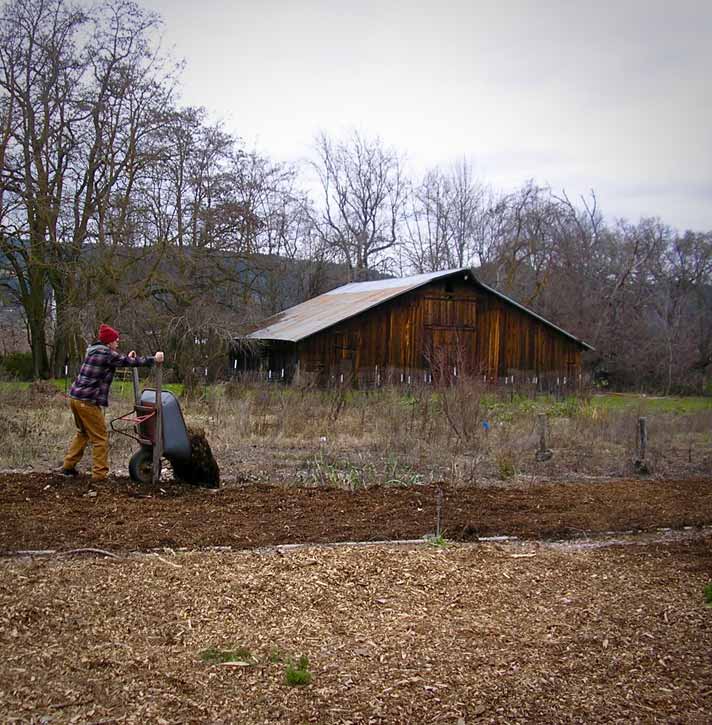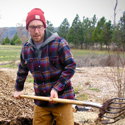Focus on Hanley Farm – February 2016
Is it possible to maintain a home garden in a way that is low-maintenance, conserves water, and meets the nutritional needs of a family living in the Rogue Valley?
The Hanley Farm agricultural program plans to conduct a research project during the 2016 growing season, seeking to answer this question using the No-Till method. The No-Till method uses wood chip mulch as the primary soil amendment in order to reverse soil erosion, increase soil fertility, and reduce the need for irrigation.
While the threat of drought continues to threaten agriculture within the Rogue Valley, it is important to discover new methods of growing food that require less irrigation and reverse the effects of soil erosion.
The No-Till Garden Research Project will provide the foundation for drought-tolerant gardening and overall food security in the Rogue Valley for years to come.
For more information on the No-Till Garden Research Project, and how to tour the No-Till garden, please contact the Agricultural Manager at HanleyAgriculture@sohs.org, like us on Facebook at Hanley Farm, and follow us on Instagram at HanleyFarm_Notill.

 Rion Glynn is the Agricultural Manager at Hanley Farm. For more information about Hanley Farm or upcoming events, please visit
Rion Glynn is the Agricultural Manager at Hanley Farm. For more information about Hanley Farm or upcoming events, please visit
Rion I am excited to hear about your results. Your mulch sounds like it’s fairly homogeneous. What about a compost with orange peels (cut small) and small sizes of household vegetable waste along with yard leaves. Would it be best to leave it spread across the top or worked in a little? I was expecting to hand til. Any thoughts?
Rion I am excited to hear about your results. Your mulch sounds like it’s fairly homogeneous. What about a compost with orange peels (cut small) and small sizes of household vegetable waste along with yard leaves. Would it be best to leave it spread across the top or worked in a little? I was expecting to hand til. Any thoughts?
Wood chip mulch was layered over the garden in October and November – providing ample time for decomposition and a slow release of fertility into the soil. Right now, in February, I am top-dressing the wood chips with chicken yard compost. Chicken yard compost is comprised of any organic material from the farm, such as: pine needles, leaves, bolted brassicas, corn stalks, hay, and grass clippings.
It is important to layer mulch, never mix. Mixing compromises the aggregate structure of the soil, that worms and micro-organisms spend years building.